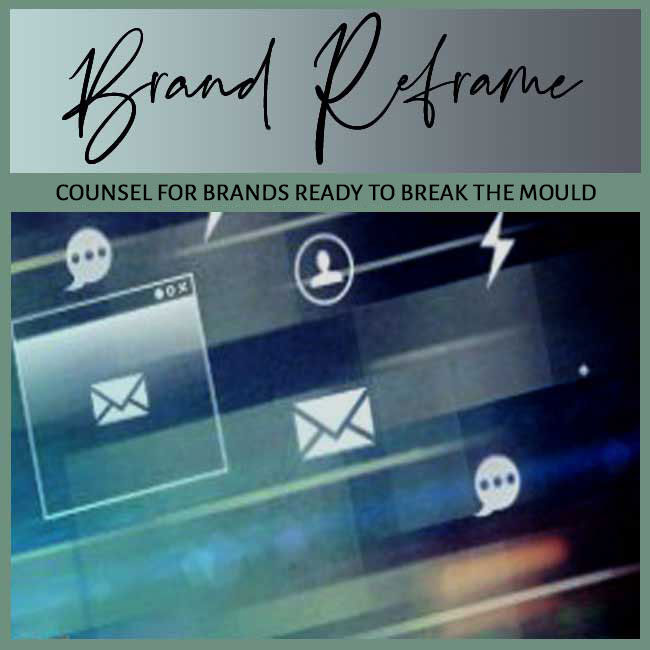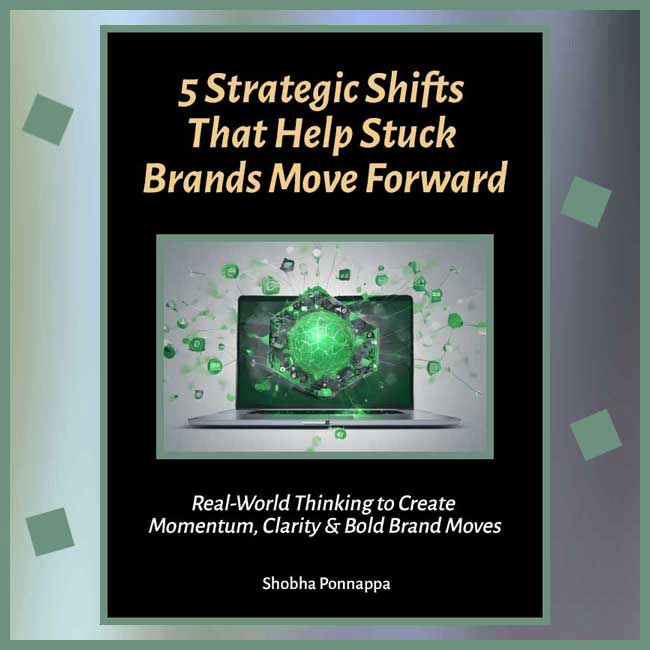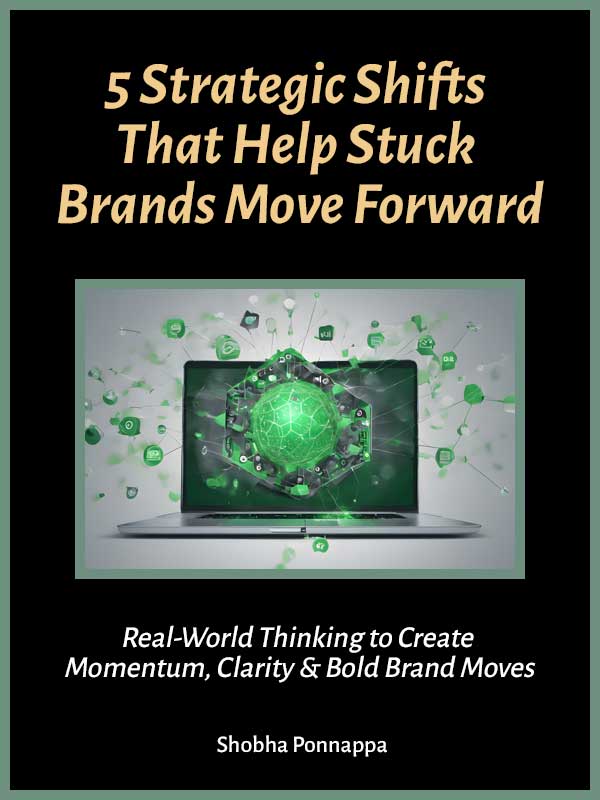
FOCUS: BRAND RELEVANCE LOSS | AUDIENCE: STEWARDS OF PLATEAUED BRANDS
BY: SHOBHA PONNAPPA | BRAND BREAKTHROUGH STRATEGIST | 45 YEARS | 125+ CLIENTS
I answer 6 tough questions about why product features that once thrilled customers may now feel too generic … and what to do.
I often work with founders of once-trailblazing brands who now feel the ground slipping beneath them. Their product still functions. Its features still match the category standard. But nothing about it feels special anymore. Launches fall flat. Customer reviews get shorter. And buyers begin choosing flashier rivals. When functionality becomes expected, differentiation must shift from what you offer to how you frame it. In this post, I answer six pressing questions that arise when product features start feeling unremarkable.
Because in every category, innovation becomes normalised. What was once a unique feature eventually becomes standard as competitors adopt it, refine it, or mass-produce it more affordably. Buyers grow used to it. What once signalled differentiation now blends into the baseline. The original edge becomes expected … not exciting.
This is especially true in fast-evolving sectors like tech, wellness, or home appliances. A self-cleaning function, a smart tracker, a hybrid material … all once novel … become hygiene factors. Your product may still be good, but the story no longer stirs curiosity. And that’s where relevance starts to slip.
Innovation is about adding new features, materials, or technologies. Relevance is about ensuring what you offer still resonates with what buyers want right now. It’s possible to be highly innovative and still irrelevant … if the features solve yesterday’s problems, not today’s needs.
Relevance isn’t about having the most features. It’s about framing the right meaning around what the product does and who it’s for. Even the simplest product can stay relevant if its story evolves with shifting aspirations, behaviours, and values.
Not at all. In fact, more features can dilute clarity. Over-featured products often confuse users, raise prices, and blur positioning. When buyers can’t quickly grasp what makes a product distinct, they tune out. Simplicity often beats complexity.
The smarter move is to reframe existing features through a sharper lens. A product with fewer, well-positioned features that meet an urgent emotional or functional need often outperforms a bloated one. The magic is in messaging, not in mechanical escalation.
Start by listening to your most loyal and lapsed customers. What were they hoping to solve or feel when they bought your product? What did it change for them? You’ll often hear words about outcomes, lifestyle shifts, or identity reinforcement.
Then go deeper. Instead of highlighting the feature, highlight the shift it enables. A silent motor isn’t just quiet … it’s peace for a working parent. A spill-proof cap isn’t just functional … it’s freedom from mess in a chaotic routine. Make the benefit emotional, not mechanical.
Buyers skim your website and ask the same clarifying questions. Sales teams say, “We need to demo it to make people understand.” Reviewers say, “Does the job,” without enthusiasm. Your ads get clicks but low conversion. These are all signs that messaging isn’t pulling its weight.
If your product requires explanation or constant discounting to sell, your message likely lacks immediacy or uniqueness. Relevance is about resonance. If people don’t feel an immediate pull, your messaging isn’t tapping into the right tension.
Look beyond the product and into the context it lives in. What habits, anxieties, or aspirations surround it today that didn’t exist before? Reinterpret your product’s role in light of those shifts. Sometimes, the same feature becomes fresh again when framed for a new lifestyle, user group, or cultural trend.
One brand I worked with repositioned its old-school storage containers as “stress-reducing meal prep companions” during the rise of remote work. No feature changed … only the narrative did. A strategic shift isn’t always about the product … it’s about where you place it in the buyer’s mental shelf.
If these questions echo what you’re experiencing, it’s time to rethink not your product, but your positioning. Features fade into sameness when framed generically. But clarity, context, and emotional pull can revive even the most familiar product. Don’t chase novelty. Chase meaning.
If you’re an investor seeking momentum for your portfolio brands, this FAQ Insight Post I wrote could interest you: “FAQs: When Multiple Micro-Campaigns Eat the Marketing Budget.“
And if you’re a solo expert looking to sharpen traction, this FAQ Insight Post I worked on may resonate: “FAQs: Why Your Thought Leadership Isn’t Leading to Leads.“

"One BIG IDEA can turn brand stagnation into unstoppable movement. Spots are limited each week ... book your breakthrough session now."
Shobha Ponnappa
More Breakthrough Ideas – Case Studies & FAQs – from the Brand Relevance Loss Category
Case Studies
FAQ Insights
I Bring You:
Smart insights, real-world frameworks, and idea-driven clarity – designed to help brands move.
Get my fortnightly Brand Reframe newsletter. Smart insights, distilled thinking, and focused momentum to help your brand lead.

Get my free case studies guide. Practical ideas, bold shifts, and clever transformations to propel your brand forward.

Just fill in the form to join. Get my newsletter and the guide shown alongside, all with several game-changing tips.

Just fill in this form and get this awesome guide via email. Plus … each fortnight you’ll receive my Brand Reframe Newsletter that brings you smart insights, distilled thinking, and focused brand momentum.